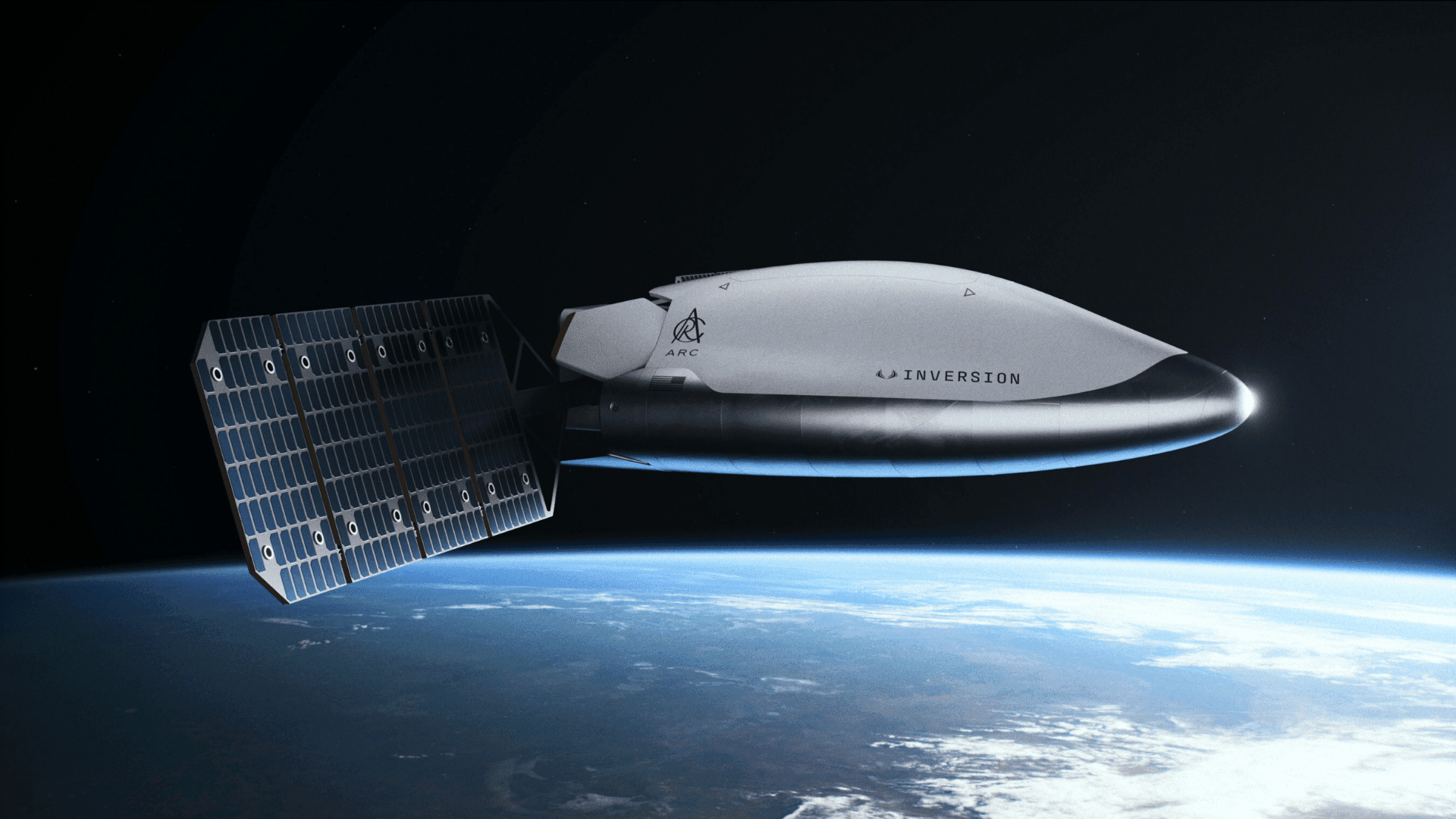Aerospace and defense technology company Inversion officially unveiled its flagship space-based delivery vehicle, Arc. The highly maneuverable reentry spacecraft is positioned to establish space as a new global logistics domain. Inversion promises the vehicle can access anywhere on Earth in under an hour for the rapid delivery of mission-critical cargo.
A New Era for Global Space Logistics

Engineers say the space-based delivery vehicle ensures unmatched speed, reach, and resiliency, particularly when delivering effects to austere, infrastructure-limited, or denied environments. Once launched into low-Earth orbit, the vehicles will form custom-sized constellations. When an agency needs the spacecraft, it will autonomously maneuver through a hypersonic reentry and land safely under parachutes.
Inversion Co-Founder and CEO Justin Fiaschetti highlighted the system’s novelty.
“With massive cross-range to cover great distances during reentry, and high maneuverability throughout every phase of flight, Arc delivers a transportation capability that has never existed before.” He said. “We see a future where thousands of Arc spacecraft form a logistics network that provides transformative reach, resilience, and deterrence for the United States and its allies.”
According to Inversion researchers, Arc can sustain maneuverability at speeds over Mach 20, offers prolonged time on condition, and maintains high g-loading.
The space-based delivery vehicle’s capabilities allow a more accurate replication of next-generation threat trajectories, engineers say. In addition, its fully reusable design and ability to achieve precise landings make testing faster and more affordable.
According to the aerospace company, development is progressing rapidly. Arc’s development builds on the successful history of Inversion’s first spacecraft, Ray. “Our team is on schedule to fly Arc’s first mission in 2026,” said Austin Briggs, Co-Founder and CTO of Inversion. “We’ve already built a full-scale manufacturing development unit of the primary structure, completed our first mission profile, and run dozens of drop tests to fine-tune accurate landings.”
In addition, Inversion teams have constructed a full-scale manufacturing development unit, completed mission profiles, and partnered with NASA on a next-generation thermal protection system.







